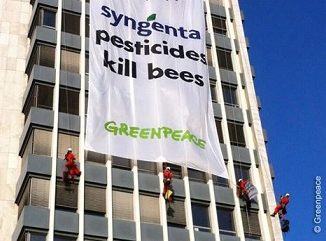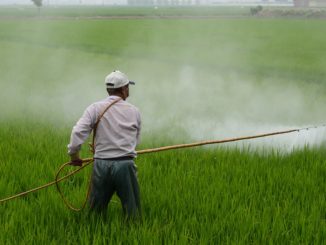Italian statistics are presenting a mixed picture of pesticide residues in food. While environmental organisations are warning of damaging levels of multi-residue for the health of consumers and the environment, pesticide firms are drawing on official figures at both European and national levels to reassure citizens on food consumption.
 The annual report of Italian environmental association, Legambiente, has shown that 0.6% of fruit and vegetable products marketed in Italy contain illegal levels of pesticide residues, equivalent to one for every 200 samples analysed. The report, Pesticidi nel piatto 2012 (“Pesticides in the pot 2012“) shows that products which are contaminated by only one residue amount to 18.3%, while those having multi-residue are 17.1%.
The annual report of Italian environmental association, Legambiente, has shown that 0.6% of fruit and vegetable products marketed in Italy contain illegal levels of pesticide residues, equivalent to one for every 200 samples analysed. The report, Pesticidi nel piatto 2012 (“Pesticides in the pot 2012“) shows that products which are contaminated by only one residue amount to 18.3%, while those having multi-residue are 17.1%.
The data also reveals an increase in the number of different chemicals which are simultaneously present in a single sample. In these cases, the sample is declared to be regular since the quantity of each residue respects law limits.
In this regard, President of Legambiente, Vittorio Cogliati Dezza, stated that “a more careful reading of results shows a situation that is far from reassuring. There are numerous cases of products that are contaminated by 7, 8 and even 9 different active substances in a compound that no one has ever analysed and that could potentially be very damaging for the health of consumers and the environment.”
According to Senator Francesco Ferrante, former President of Legambiente, “The issue of multi-residue can no longer be postponed. The Government should provide necessary counter-measures in the National Action Plan for a sustainable use of plant protection products, which is under development but does not contain any reference to multi-residue.”
Agrofarma, an Italian association of pesticide firms, has replied to Legambiente declarations, stating that: “Once again, no acknowledgment about checks regularly made by competent authorities is being given: The Italian fruits and vegetable sector is subjected to rigorous and continuous inspections by the Ministry of Health, which depict an entirely reassuring picture for consumers.”
The reference is to an official report of the Italian Minister of Health on the presence of pesticides in food, which states that in 2010 0.4% of fruits and vegetable products were contaminated by residues that are above legal limits.
Agrofarma added that “also at a European level, results of the latest EFSA report on pesticides show that there is no concern for food safety: 97.4% of the samples analysed in 2009 were in fact under legal maximum residue levels.”




